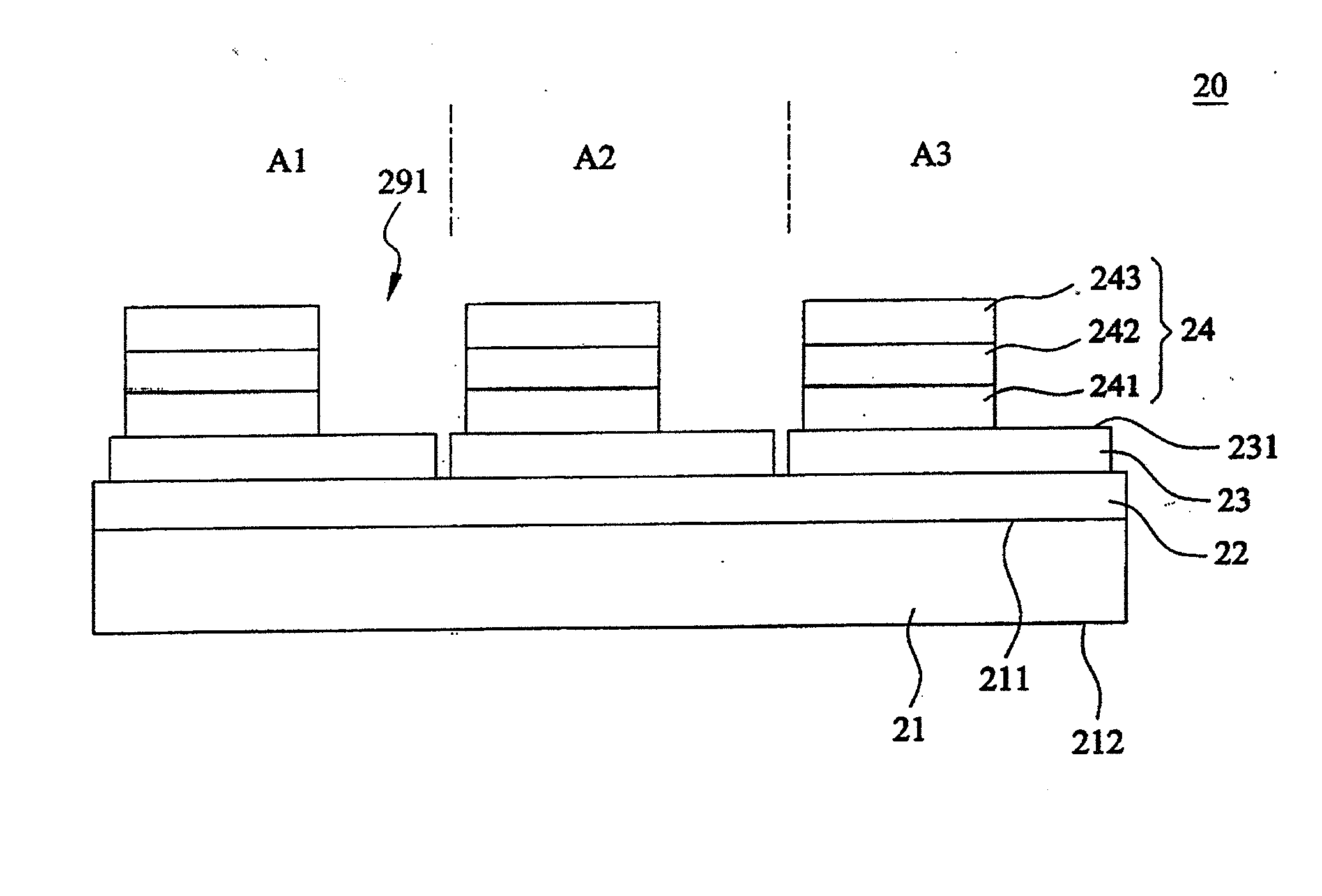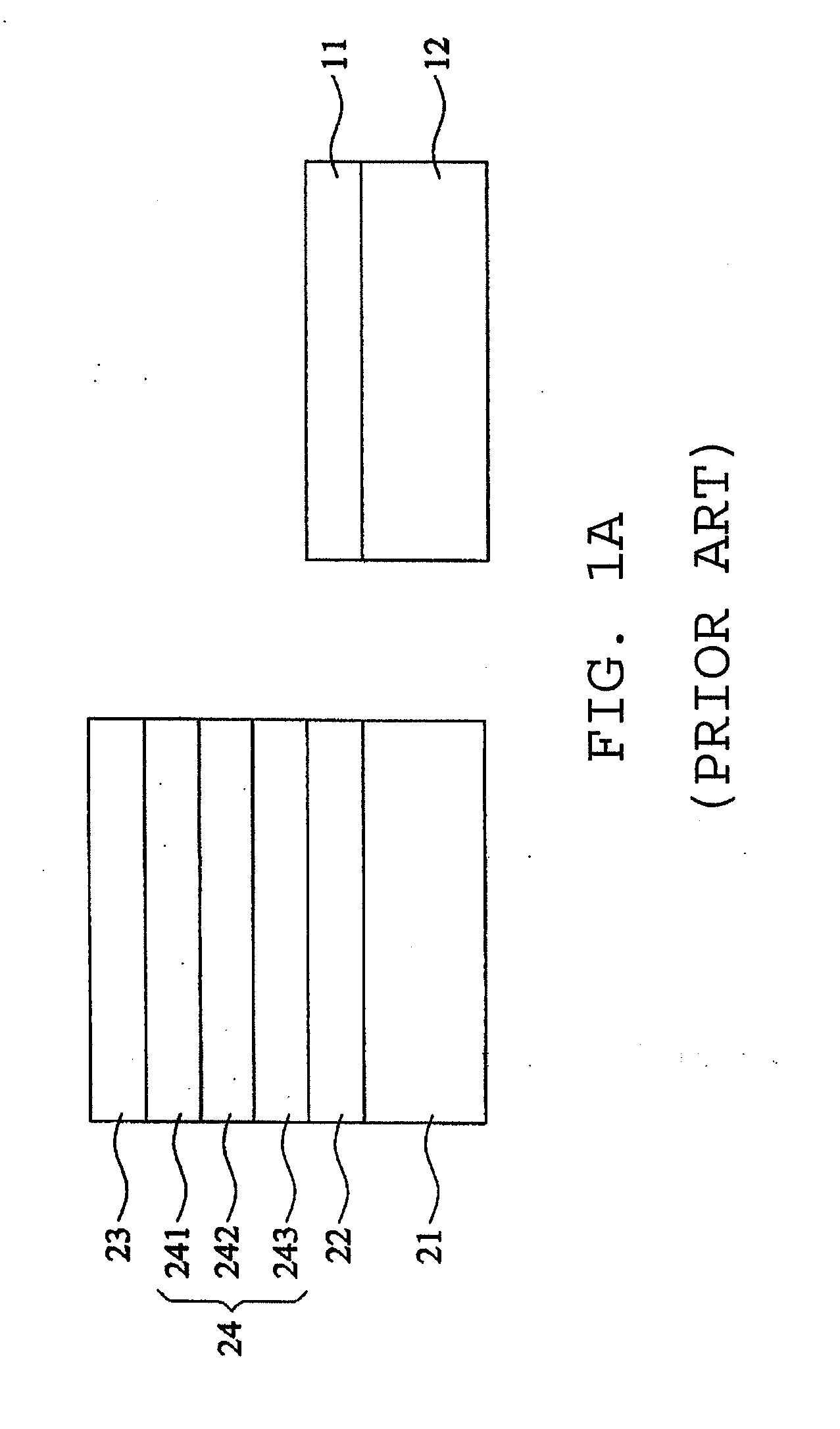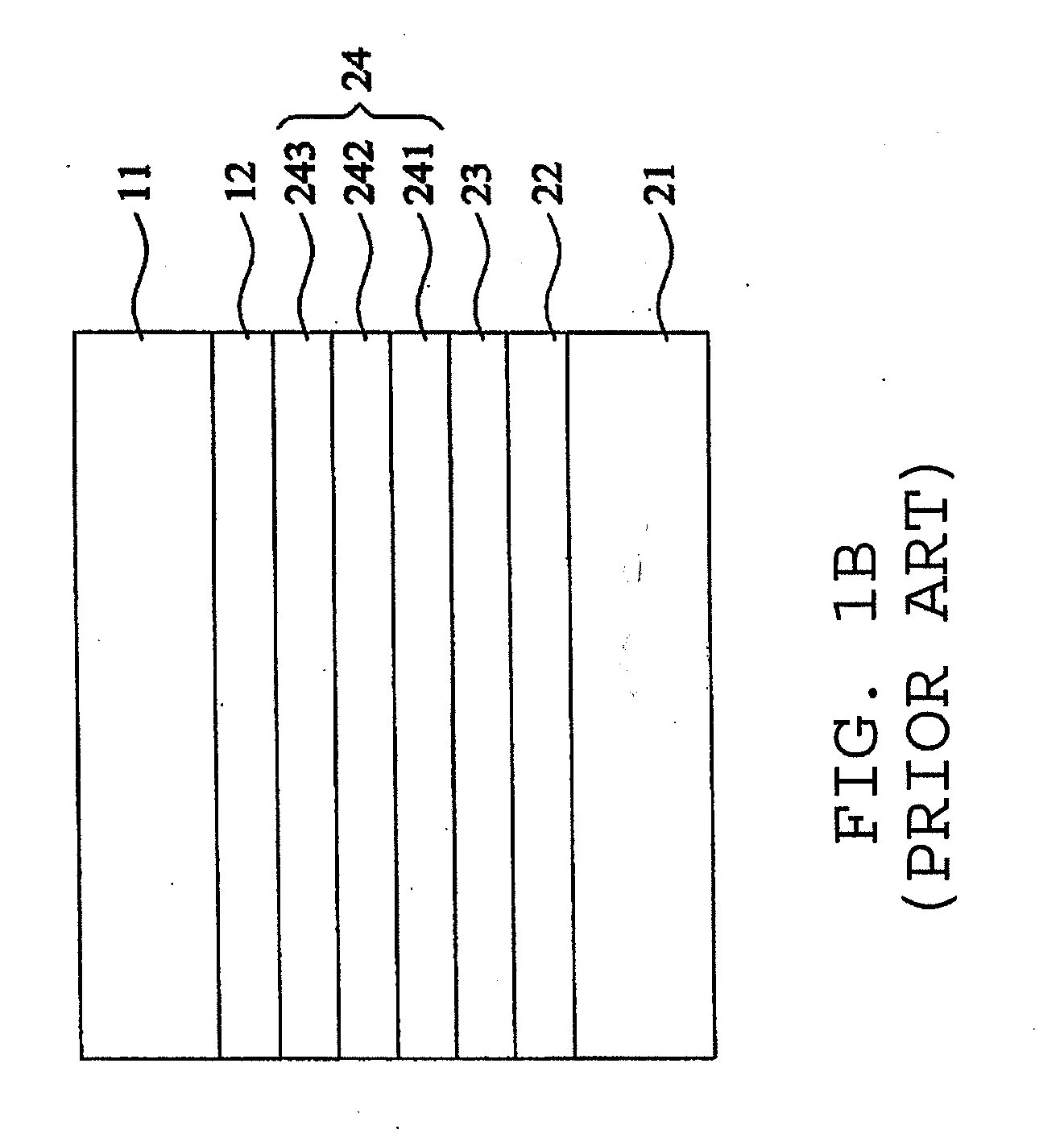LED Structure
a technology of led structures and led components, applied in the direction of semiconductor/solid-state device manufacturing, electrical apparatus, semiconductor devices, etc., can solve the problems of weak productivity, high manufacturing cost, and inability to connect two led structures without sub-mounts, and achieve the effect of improving elaborateness
- Summary
- Abstract
- Description
- Claims
- Application Information
AI Technical Summary
Benefits of technology
Problems solved by technology
Method used
Image
Examples
first preferred embodiment
[0064]Please refer to FIGS. 1A, 1B and 1C for a schematic drawing showing a conventional first substrate 21 and a pre-processing LED structure 10 to be assembled together, a schematic drawing showing the first substrate 21 and the pre-processing LED structure 10 assembled together, and a schematic drawing according to FIG. 1B showing a temporary substrate 11 and an etch-stop layer 12 removed therefrom.
[0065]Conventionally, the pre-processing LED structure 10 that will later receive unit division, isolation layer formation and electrically conducting plate installation is formed on a wafer through a semiconductor process. However, since being undesirably thick and opaque and thus unfavorable to practical applications of the LED structure, the wafer has to be removed later. In other words, the wafer is a substrate for temporary use during the process for constructing the LED structure, and thus is herein referred to as the temporary substrate 11.
[0066]Among the known methods for remov...
second preferred embodiment
[0085]Please refer to FIGS. 7 to 9 for the LED structure 30 according to another embodiment of the present invention. The LED structure 30 includes a first substrate 21, an adhering layer 22, at least two first ohmic contact layers 23, at least two epi-layers 24, a second isolation layer 31, at least two fifth electrically conducting plates 32, and at least two sixth electrically conducting plates 33.
[0086]The LED structure 30 of the present embodiment may be also made through the process for the first embodiment as shown in FIGS. 1A to 1C. Similarly, the first substrate 21 with the adhering layer 22 attached thereto is bound with the pre-processing LEDs 28. Then the temporary substrate 11 and the etch-stop layer 12 are removed therefrom by etching so as to obtain the pre-unit-division LED structure 30.
[0087]The first substrate 21 has a first surface 211 and a second surface212 and primarily serves to support the whole LED structure 30. The first substrate 21 may be a monocrystal su...
PUM
 Login to View More
Login to View More Abstract
Description
Claims
Application Information
 Login to View More
Login to View More - R&D
- Intellectual Property
- Life Sciences
- Materials
- Tech Scout
- Unparalleled Data Quality
- Higher Quality Content
- 60% Fewer Hallucinations
Browse by: Latest US Patents, China's latest patents, Technical Efficacy Thesaurus, Application Domain, Technology Topic, Popular Technical Reports.
© 2025 PatSnap. All rights reserved.Legal|Privacy policy|Modern Slavery Act Transparency Statement|Sitemap|About US| Contact US: help@patsnap.com



